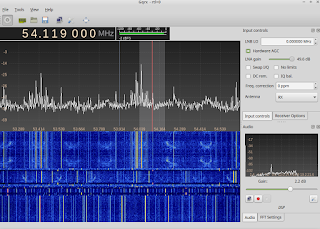Interactive visualisation of pskreporter logs using python

As promised in my previous post , here is a fun little code snippet to visualise logs obtained from pskreporter. Obviously the first step is to obtain logs from pskreporter, using the URL shown below. Needless to say, you have to replace my callsign (VK6JN) with yours. https://pskreporter.info/cgi-bin/pskdata.pl?callsign=VK6JN After unzipping the downloaded zip file, we obtain a psk_data.csv file that contains all the information we need. In the following gist, I demonstrate a simple code to visualise those data in an interactive world map that can be viewed in a web browser. Replace the appropriate fields (callsign, locator etc.), run the python code and you shall obtain a web interface with the reports as shown in Fig.1, where the paths have been colour coded with the reported SNR. Clicking on the pins, you will also get the callsign of the RX station. This code can be modified to analyse WSPR logs as well. Fig.1. A screenshot of the resulting webpage. Hope this is helpful ! 73, V...




